Manual tools Hammers
()Sort by
-
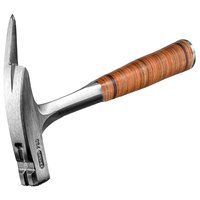
Picard Roofing Full-Stel Roughened 317 mm Hammer
80.98 €
-

Atm A402 65 mm Rubber Mace
8.99 €
-

Mota Herramientas MG05 Rubber Mace 56 mm
6.99 €
-

Kreator 900G Fiber Rubber Mallet
8.99 €
-

Picard Locksmith SecuTec HS 320 mm Hammer
20.99 €
-

Halder 3203.060 Simplex 60 mm TPE Hammer Mouth
12.99 €
-
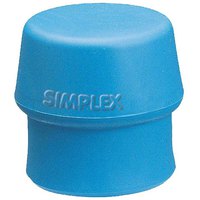
Halder 3201.060 60 mm TPE Hammer Mouth
13.49 €
-

Fiskars IsoCore M Finishing Hammer Curved
39.49 €
-

Fiskars M Drilling Hammer
39.49 €
-

Picard Pinching Bar Blackgiant 1.8kg Hammer
23.99 €
-

Halder Baseplex 40 mm Nylon Hammer
29.99 €
-

Picard 0032700-0800 DIN 1041 Locksmith Hammer
32.99 €
-

Mota Herramientas MA10F Polished Mason Mace 40x40 mm
12.99 €
-

Mota Herramientas MC18 Carpenter Hammer 18 mm
5.99 €
-
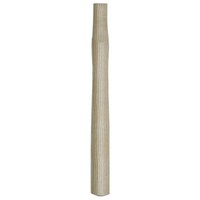
Picard 0099041-0700 Hammer Handle
3.99 €
-

Picard 0037000-2 250-300 g Hammer Rounded Wedge
0.99 €
-

Kreator 100G Fiber Mechanic´s Hammer
4.99 €
-

Kreator 300G Fiber Mechanic´s Hammer
6.49 €
-

Halder 3202.040 Simplex 40 mm Spare Rubber Hammer Mouth
5.49 €
-

Guillet GBCMG 25-T Bush Hammer Mouth
24.99 €
-

Guillet GBCMG 49-T Bush Hammer Mouth
24.99 €
-

Mota Herramientas MB03 Polished Ball Hammer 28 mm
7.49 €
-

Mota Herramientas MC22 Carpenter Hammer 22 mm
6.99 €
-

Mota Herramientas MG27F Polished Formwork Hammer 27 mm
10.49 €
-

Mota Herramientas MS30 Weld Pick
6.99 €
-
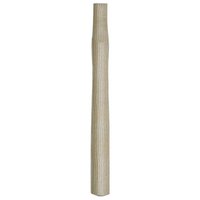
Picard 0099041-0450 Hammer Handle
3.99 €
-

Picard 0000901-0450 Ball Peen Hammer With Wood
16.99 €
-
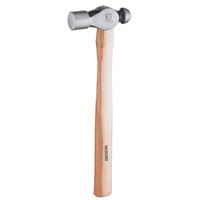
Ruthe 3021270119 Ball Peen Hammer With Wood
22.99 €
-

Halder Simplex Soft-Face 40 Rubber/Nylon Hammer
36.49 €
-

Halder Supercraft G 35 Anti-Slip Grip Hammer
34.99 €
-

Ferrestock FSKMGB001 Mason Pot
8.99 €
-

Irimo 22 mm 529151 Nylon Hammer
7.99 €
-

Bosch 1600A027M3 13 Pieces Tool Set
65.49 €
-

Fiskars IsoCore L Finishing Hammer
41.99 €
-

Fiskars IsoCore M Demolition Tool
58.49 €
-

Fiskars IsoCore XXL Finishing Hammer
48.99 €
-

Fiskars L Drilling Hammer
50.49 €
-

Fiskars IsoCore L Demolition Tool
86.49 €
-

Fiskars IsoCore L Finishing Hammer Curved
37.49 €
-

Fiskars IsoCore M Finishing Hammer
34.49 €
-

Fiskars IsoCore XL Finishing Hammer
41.99 €
-

Halder Supercraft H 30 Reducing Handle Hammer
29.99 €
-

Halder Simplex Soft-Face 60 Rubber/Plastic Hammer
58.99 €
-
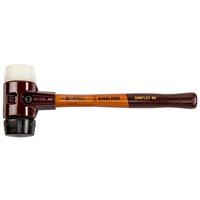
Halder Simplex Soft-Face 60 Rubber/Nylon Hammer
62.99 €
-
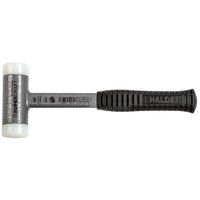
Halder Supercraft G 40 Anti-Slip Grip Hammer
41.99 €
-
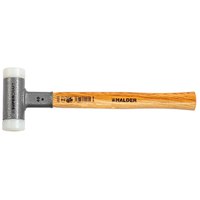
Halder Supercraft H 40 Hammer
37.49 €
-

Halder Supercraft H 50 Hammer
46.99 €
-

Halder Simplex Soft-Face 40 TPE-Soft/TPE-Mid Hammer
30.99 €
-

Halder Secural Break-Proof Head And Handle Hammer
40 €
-

Halder Baseplex 30 Hammer
19.99 €
-
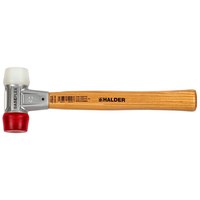
Halder Baseplex 40 Hammer
27.49 €
-

Picard 300 610 930 Pinching Bar BlackGiant Set
65.49 €
-

Picard Pinching Bar Blackgiant 0.6kg Hammer
13.99 €
-

Wolfcraft 6927000 Laminate Fitting Tool
6.49 €
-

Blim BL0314 Rubber Mallet
7.99 €
-

Kreator 40 mm Plastic Rubber Mallet
6.99 €
-

Kreator 450G Wood Rubber Mallet
4.99 €
-

Picard 0004201-1500 1500 g Mason Flowerpot
24.99 €
-

Atm A301 22 mm Mace Handle
2.99 €
-

Halder 3366.081 80 mm Anti Rebound Mace
207.99 €
-
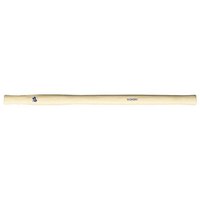
Halder Simplex 100/125/140 mm Mace Handle
46.49 €
-
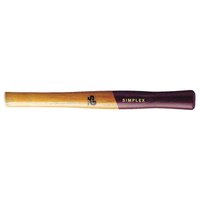
Halder Simplex 60 mm Mace Handle
9.99 €
-
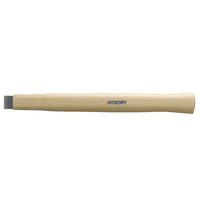
Halder Supercraft 20/25 mm Mace Handle
4.99 €
-
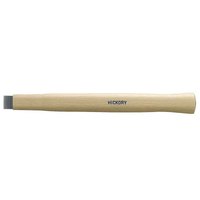
Halder Supercraft 40/45/50 mm Mace Handle
6.99 €
-

Atm ESK2313 23x13 mm Security Handle
4.99 €
-

Atm ESK2313 26x7 mm Security Handle
4.99 €
-

Halder MaxxCraft 310 mm Locksmith Hammer
49.49 €
-

Halder Secural 34x45 mm Anti Rebound Mace
45.99 €
-

Halder Simplex 40 mm Nylon Mace
38.49 €
-

Halder Simplex 60 mm TPE Mallet
55.99 €
-

Halder SuperCraft 40 mm Anti Rebound Mace
41.99 €
-

Picard 0000901-0340 Ball Peen Hammer With Wood
14.99 €
-
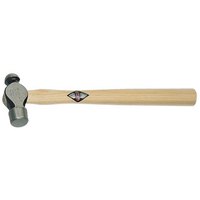
Picard 0000901-0500 Ball Peen Hammer With Wood
17.99 €
-

Picard 0008501-18 DIN 5109 18 mm Cabinetmaker´s Hammer
11.99 €
-
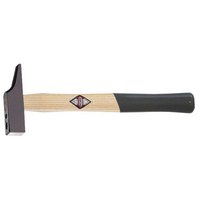
Picard 0008501-20 DIN 5109 20 mm Cabinetmaker´s Hammer
12.49 €
-

Picard 0008501-28 DIN 5109 28 mm Cabinetmaker´s Hammer
13.99 €
-
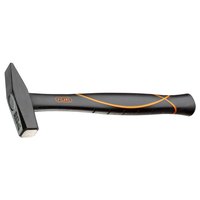
Picard 0032700-0300 DIN 1041 Locksmith Hammer
20.99 €
-
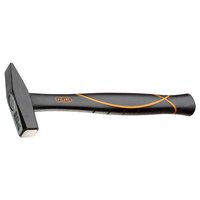
Picard 0032700-0400 DIN 1041 Locksmith Hammer
24.49 €
-

Picard 0032700-0500 DIN 1041 Locksmith Hammer
24.99 €
-

Ruthe 3002220119 DIN 5109 Cabinetmaker´s Hammer
9.99 €
-

Ruthe 3004010119 DIN 1041 Locksmith Hammer
10.99 €
-
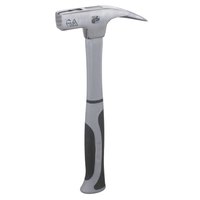
Ruthe 3006047119 DIN 7239 Formwork Hammer
18.99 €
-

Ruthe 3008010119 DIN 1041 Locksmith Hammer
16.99 €
-

Halder BlackCraft 40 mm Anti Rebound Mace
46.99 €
-

Halder BlackCraft 50 mm Anti Rebound Mace
58.49 €
-

Halder BlackCraft 60 mm Anti Rebound Mace
83.99 €
-

Atm A102 28 mm Nylon Mace
10.99 €
-

Atm A104 44 mm Nylon Mace
23.49 €
-

Atm A401 55 mm Rubber Mace
7.99 €
-

Ruthe 3030070119 Ball Peen Hammer With Wood
25.49 €
-

Ruko DIN 335 C 90º Ø Max 12.5 mm Manual Countersink
27.49 €
-

Ruko DIN 335 C 90º Ø Max 25 mm Manual Countersink
50.99 €
-

Rubi 65905 500 g Drilling Hammer
11.99 €
-

Mota Herramientas MB02 Polished Ball Hammer 25 mm
5.49 €
-

Mota Herramientas MB04 Polished Ball Hammer 30 mm
7.99 €
-
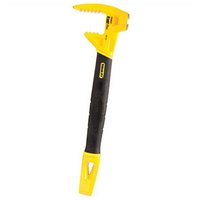
Stanley 55119 Hammer-Stick
48.99 €
How to choose a hammer?
Choosing the right hammer depends on the specific tasks you plan to perform. Hammers come in various types and sizes, each designed for specific purposes. Here are some factors to consider when choosing a hammer:Types of Hammers: Understand the different types of hammers available and their purposes. Some common types include claw hammers general purpose for driving nails and pulling them out, ball peen hammers used in metalworking, rubber mallets non marring for delicate tasks, sledgehammers heavy duty for demolition, and more.
Weight: Consider the weight of the hammer. Heavier hammers deliver more force, making them suitable for heavy duty tasks, while lighter hammers are more comfortable for prolonged use and lighter jobs.
Handle Material: Look for a hammer with a handle made from a durable material like wood, fiberglass, or steel. Wooden handles offer a traditional feel but can break under excessive stress, while fiberglass and steel handles are more robust and resistant to damage.
Grip and Comfort: Check the grip of the hammer. A comfortable grip reduces hand fatigue and improves control during use. Some hammers have ergonomic grips or anti vibration features for added comfort.
Balance: Hold the hammer and check if it feels balanced. A well balanced hammer will be easier to control and require less effort to use effectively.
Versatility: If you need a hammer for a variety of tasks, consider a multi use hammer with interchangeable heads or a combination hammer with different faces on either side.
Quality and Brand: Choose hammers from reputable brands known for their quality tools. High quality hammers are more durable and likely to perform well over time.
A drilling hammer is a hand tool specifically designed for striking chisels, nails, or small drilling tasks. It is similar to a regular hammer but typically has a shorter handle and a heavier head. The head of a drilling hammer is often double faced, with one side flat and the other side chamfered or slightly convex. The weight of a drilling hammer varies depending on the intended use, with common sizes ranging from 1 to 4 pounds. The shorter handle allows for better control and precision when striking small objects or when working in confined spaces.
Drilling hammers are commonly used by carpenters, metalworkers, and masons for various tasks, such as driving nails, chiseling, and light drilling. The heavier head of the drilling hammer allows for more forceful blows while the compact size makes it easy to handle in tight spaces.
A claw hammer is a hammer mainly employed in carpentry for forcing nails into or dragging them from wood. While these hammers all attribute a rounded head for pushing nails, the claw end is every bit as valid for dividing wood, rending drywall, and other small waste tasks. You can buy these claw hammers from these brands: Fiskars, Wolfcraft, Rubi, Ferrestock, and Halder.
Hammer curved is also called trim hammers. The curved talon permits you to reach into smaller areas often seen in trim and finish employment.

























